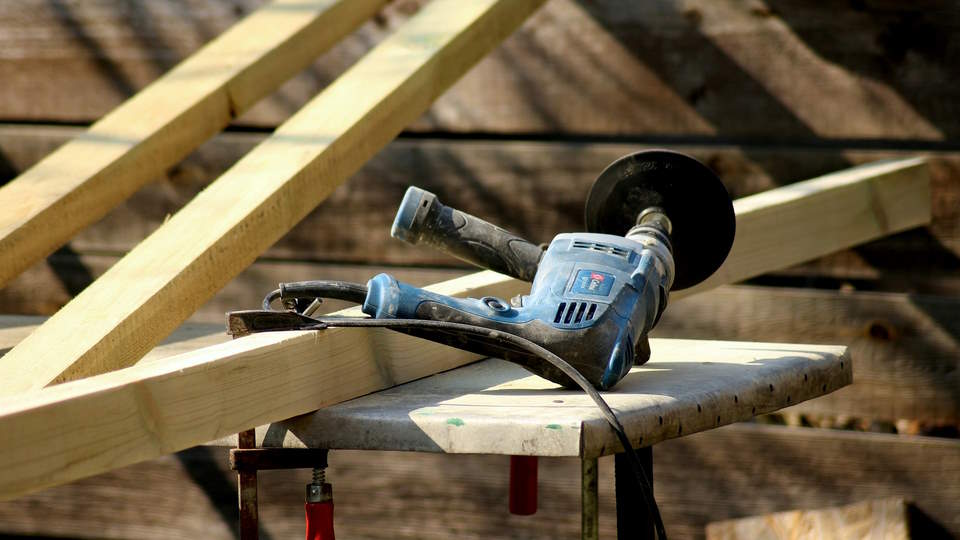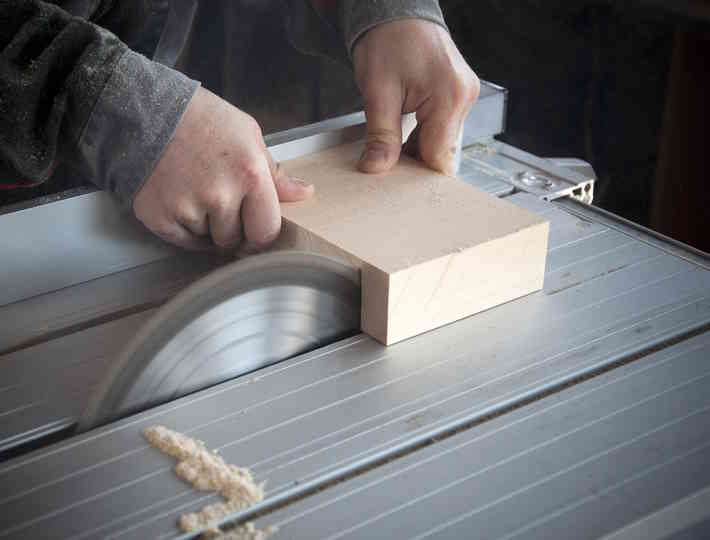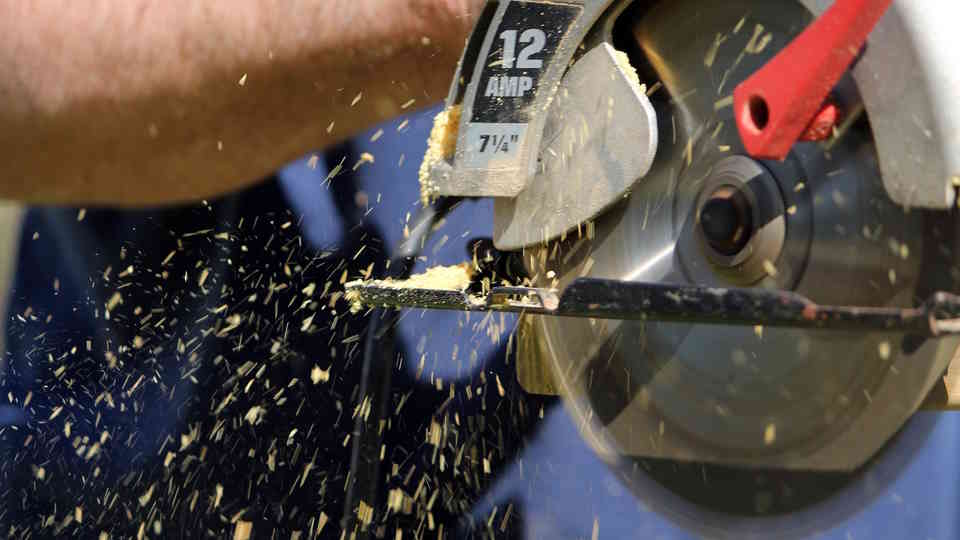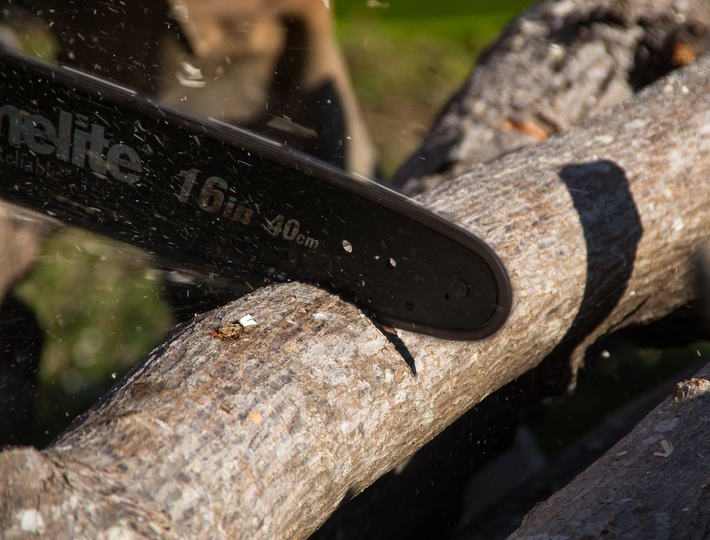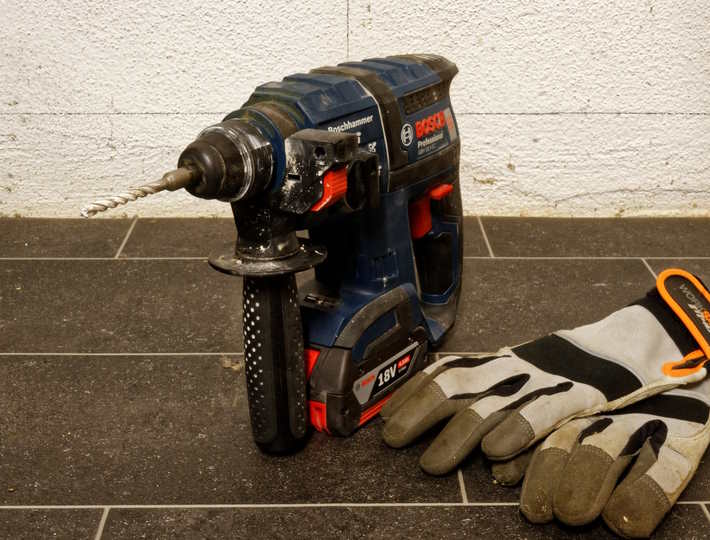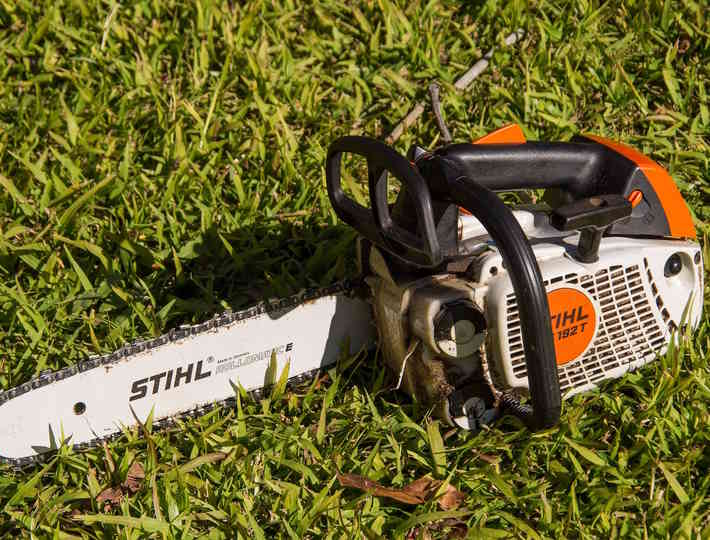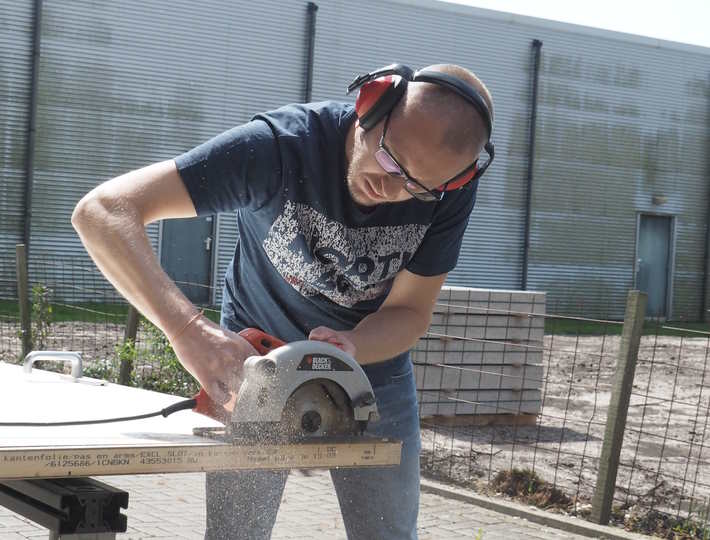Introduction to Power Tool Safety
Power tools are a great way to complete a variety of tasks with speed and ease, but they should always be used with caution. Improper use of power tools can lead to serious injuries, so it’s important to be aware of the potential risks and know how to safely use the tools. Below are some important guidelines for using power tools safely.
General Safety Guidelines
These tips should be followed when using any type of power tool. Always wear protective gear, such as eye and ear protection, when operating a power tool. Never operate a tool without following the manufacturer’s instructions, and always make sure the tool is in good working condition before using it.
Pay attention to the type of material being cut or drilled and be sure to use the proper tool and blades for the job. When working with electricity, make sure the cord is in good condition and the outlet is working properly. Be aware of your surroundings and take the necessary safety precautions when working outdoors or with any other hazardous materials. Make sure to unplug the power tool when it is not in use and store it properly.
Specific Power Tool Safety Tips
The following tips apply to the specific types of power tools that are most commonly used. When using a drill, keep the drill bit sharp and replace worn parts when needed. When using a saw, always be aware of the dangers of kickback and use the appropriate blade for the material being cut.
When using a sanding tool, wear a dust mask to protect from inhalation of sanding particles. When using a grinder, make sure to use a face shield to prevent sparks from entering the eyes, and always wear protective gloves when using a tool with a spinning blade. Lastly, when using a circular saw, ensure that the blade is sharp and the saw is firmly mounted onto a work surface.
Preparing for Safe Power Tool Operation
Preparing for safe power tool operation requires the user to adhere to certain guidelines to ensure their safety and the safe operation of the tool. Before operating a power tool, you should take the following steps:
- Know the tool’s capabilities and limitations.
- Read the owner’s manual or other safety documentation that came with the tool.
- Understand the purpose of all of the controls on the power tool.
- Inspect all parts of the tool for damage or excessive wear.
- Replace any missing or worn parts.
- Check that all of the components of the tool are tightened securely.
- Ensure that the tool has the correct type and size of blade, bit, or other accessory.
- Inform anyone in the area of the tool’s operation.
- If the tool has a variable speed control, make sure it is set properly for the type of material and speed of operation.
- Use only safety devices, attachments, and accessories that are approved for the tool.
Personal Protective Equipment for Power Tool Use
When using power tools, it is essential to wear the appropriate personal protective equipment (PPE). Different power tools require different levels of PPE, but the minimum items to always have and wear are safety goggles, non-skid safety shoes, protective gloves, a hard hat and hearing protection.
Safety goggles should protect against dust and flying debris. Non-skid safety shoes should offer additional protection against slipping and are often designed with a steel toe cap to protect the feet from heavy objects. Protective gloves should be chosen to fit the job, with thicker, insulated gloves needed for jobs involving electricity. A hard hat is essential to protect against falling objects, and ear protection is necessary to protect against loud noise and potential hearing loss.
Additionally, depending on the job, you may need to wear additional PPE such as a face shield, welding helmet, respirator, dust mask, or chemical-resistant gloves. Always read and follow the safety instructions for the power tool you are using and wear the appropriate PPE for the job, even for tasks that may seem simple. Taking the time to use the proper PPE will help to ensure your safety when using power tools.
Handling Power Tools to Avoid Accidents
Power tools are highly beneficial and can greatly reduce the amount of time and effort needed to complete a task. With this in mind, it is important to take the proper precautions to ensure that these tools are used safely and efficiently. Here are some tips on handling power tools to avoid accidents:
- Read the manual before using the tool: Make sure you read the manual before using a power tool to understand the safety warnings and instructions on how to use the tool properly.
- Wear the appropriate safety equipment: Wear safety glasses, ear defenders, dust masks, steel-toe-capped boots and any other relevant safety equipment when using a power tool.
- Maintain the power tools regularly: Keeping tools clean, lubricated, and regularly checked for any damage or wear can help to reduce the possibility of an accident.
- Check power cords regularly: Make sure all the power cords are in good condition. Check the insulation to make sure that it is not damaged or frayed.
- Safe storage of tools: Store the tools in a safe place, locked away from any children, and in an area with good ventilation.
Preventing Electrical Shock while Using Power Tools
When using power tools, it is vital to make sure that you take proper safety precautions in order to avoid potential electric shock. This can be done in a few different ways:
- Always use tools that are in good working condition and that have the proper safety features in place, such as ground fault circuit interrupters (GFCI).
- Inspect the power cord on the tool and make sure that it is not frayed or damaged in any way.
- Keep your hands away from the spinning blades or moving parts of the tool.
- Make sure that you are wearing the proper safety gear, such as rubber-soled shoes, insulated gloves and goggles.
- Do not attempt to repair a tool that is malfunctioning; take it to a qualified technician instead.
Additionally, it is important to be aware of your surroundings when using a power tool and to make sure that the area is free from water and other liquids that could increase the risk of electric shock. If you’re working outdoors, make sure that the tool is not being used in wet conditions and that you are not standing in puddles or long grass. By following these simple safety tips, you can help to reduce the risk of electric shock while using power tools.
Avoiding Common Power Tool Accidents
Power tools can be dangerous if used incorrectly and can cause serious injuries. There are a few simple safety tips you can follow to help avoid accidents when working with power tools:
- Be Aware of your Surroundings: The first step to staying safe is to be aware of your surroundings. Make sure you are aware of where other people are, what’s above and around you, and any potential hazards. Avoid working in small, cramped areas and make sure you have plenty of room to maneuver.
- Wear the Right Safety Gear: Be sure to wear the appropriate safety gear when working with power tools. This includes gloves, goggles, and ear protection. Wear firm shoes that have good grip to help prevent slips and falls. Clothes should fit snugly and not be loose or baggy. Long hair can be a hazard and should be tied back and away from the tool.
- Read the Manual: Read the owner’s manual for your power tools before using them. Most manuals contain important safety information, how-tos, and operating instructions. It is important to understand how the tools are meant to be used before you begin.
- Inspect Tools and Cords: Be sure to inspect tools and cords before using them. Look for signs of wear or damage, loose screws and bolts, or signs of frayed cords. Do not use tools that appear to be damaged or defective in any way.
- Unplug before Cleaning: Unplug all power tools before cleaning, repairing, or inspecting them. This prevents unintentional startup of the tool and eliminates the risk of electric shock.
Safe Power Tool Use Near Children and Pets
When using power tools such as drills, saws, and other home equipment, make sure that children and pets are not present in the area. Power tools create sparks, loud noises, and flying debris that can cause harm if you are not careful.
Here are some tips to help ensure safe power tool use near children and pets:
- Ensure that the area is free of children and pets before beginning work.
- Always follow the operating instructions provided with the tool.
- Wear protective gear such as safety glasses, ear protection, and a dust mask.
- Keep all power tools unplugged or turned off when not in use.
- Keep children and pets away from the area while the tool is in use.
- Always keep your eyes and hands away from the power tool head.
- Secure the workpiece to avoid kickback.
- Do not reach too far away from the tool head while in use.
- Always have a first aid kit accessible in case of an emergency.
Securing Workpiece to Prevent Kickback and Injury
Woodworkers of all experience levels must understand the risks posed by kickbacks and take measures to secure the workpiece against kickbacks. Workpiece security can be achieved in several ways, including using feather boards, jigs, fixtures, and clamps.
- Feather Boards: Feather boards are an important tool for ensuring proper workpiece security and are best suited for woodworking machines such as table saws, jointer/planers, and band saws. They are used to help guide the workpiece and to keep it from being forced back onto the operator. Feather boards are generally placed against the fence and the workpiece, which offers a cushion between the fence and the wood.
- Jigs and Fixtures: Jigs and fixtures are devices that attach to a machine and help guide the workpiece into place. A jig is a device that allows a woodworker to pre-set the position of a workpiece and secure it in place while the machine is running. Fixtures are similar, but they are designed to move around or pivot, allowing the woodworker to adjust the positioning of the workpiece before or during a cut.
- Clamps: Clamps are commonly used to secure a workpiece to a machine. They are usually attached to the edges of the workpiece and tightened to keep the material in place while the machine is running. Clamps are a great way to ensure that the workpiece doesn’t move while the machine is running, and they also provide some additional safety from kickback.
Responding to Power Tool Malfunctions
Malfunctioning power tools can be a real hassle. Luckily, most problems can be solved fairly easily without having to bring the tool in for repairs. Before attempting to fix the tool, however, it is important to unplug the tool first and to wear safety glasses and gloves. Once these precautions are taken, here are a few tips for responding to power tool malfunctions:
- Check the power source: If a power tool is not turning on, then the first step is to check the power source. Check to make sure that the power cord is properly plugged into a working outlet and that all switches are in the “on” position. If it is a battery-powered cordless power tool, double-check the battery level.
- Check the switch: If the switch is worn, faulty, or loose, then it may need to be cleaned, tightened, or even replaced. Take the time to inspect the switch and clean it with a damp cloth if necessary.
- Check the motor: Another possible issue is the motor. Check the motor for signs of wear and tear, such as burn marks or a build-up of dust and dirt. If the motor is not functioning properly, then it may need to be replaced.
- Check the blades: For tools with blades, such as a table saw or circular saw, the blades may need to be sharpened or replaced if they are dull or chipped. Be sure to use the correct type of blade for the tool and to use the correct sharpening technique.
- Check the wiring: Wiring can sometimes get loose, frayed, or damaged. Make sure to inspect the wiring and connections to make sure that there are no loose wires or exposed wires. It may be necessary to call in a professional electrician if the wiring is complex.
By following these tips, most power tool malfunctions can be fixed quickly and easily. If necessary, contacting a professional or the manufacturer can provide additional assistance.
Maintaining Power Tools for Safe Operation
Power tools are essential for many tasks, but using them can also be hazardous if they are not maintained properly and operated safely. To ensure that power tools are as safe as possible, there are some important steps to follow:
- Check the Tool Before Use – Make sure that all guards are in place and that all components of the power tool are clean and free of debris. Inspect the cord, cord protector and the plug for any defects.
- Inspect the Blades and Bits – Make sure that the blades, bits and accessories are sharp, free of nicks and wear, securely attached, and compatible with the size, speed and rating of the power tool.
- Use the Right Accessories and Attachments – Select the correct accessories, attachments and blades for the job. Ensure that they will fit the tool and are designed for the task you are performing.
- Store Power Tools Properly – When not in use, be sure to store all power tools in a clean, dry place, away from children and animals. Also avoid storing tools in humid or damp areas, as this can damage the electrical components and increase the risk of electric shock.
- Use the Proper Fuel or Oil – Make sure you know what type of fuel or oil is necessary for the proper operation and maintenance of the tool. Follow the manufacturer’s instructions for filling, changing and replacing fuel or oil.
- Perform Regular Maintenance Checks – Regularly check the power tool for any signs of wear or damage, such as worn brushes, loose connections, broken or cracked parts, or frayed cables. Replace any defective or damaged parts as soon as possible.
- Check the Plug and Cord – Make sure that the plug and cord are not frayed, worn or damaged. Replace them if necessary.
- Wear Protective Gear – Whenever using a power tool, make sure to wear the appropriate safety gear, such as eye protection, gloves, and head and hearing protection.
Emergency Response while Using Power Tools
In the event of an emergency while using power tools, there are some steps you should take before, during, and after the event.
Before
Before using any power tool, you should carefully read the instruction manual and practice the proper safety precautions. This includes wearing protective gear such as gloves, eye protection, and ear protection. It is also important to inspect the power tool for any signs of damage and to ensure that all the parts are functioning properly.
During
If an emergency situation occurs while using a power tool, the first step is to shut off the power and disconnect the tool from any power source. Additionally, if the power tool is not already locked out and tagged, you should do so to prevent any potentially hazardous use by another person. Finally, assess the situation and if necessary, call for help.
After
Once the emergency situation has been resolved, it is important to recheck the power tool to make sure it is functioning properly and to document any maintenance or repairs that were made. Additionally, it is a good idea to review the safety protocol with other workers to make sure they understand how to properly use the power tool and how to handle any potential emergency situations.
Conclusion
The use of power tools can be a dangerous endeavor if the proper safety precautions are not taken. Following safety tips can help ensure both personal safety as well as the safety of those around you. It is important to read the power tool manual carefully, wear the appropriate safety gear, and make sure to use the tool correctly. Additionally, one should never operate a power tool that has been damaged or altered in any way, and take extra precautions when operating a power tool around children.
Safety tips can help protect you against potential conflicts, injuries, and even death. Therefore, it is important to ensure that you are informed of the safety tips and follow them when using power tools. Doing so can help keep you and those around you safe.

